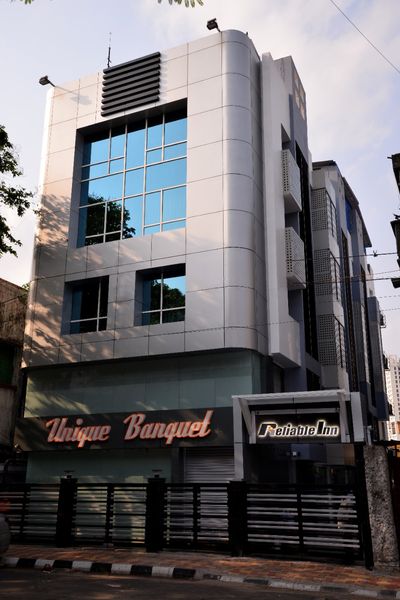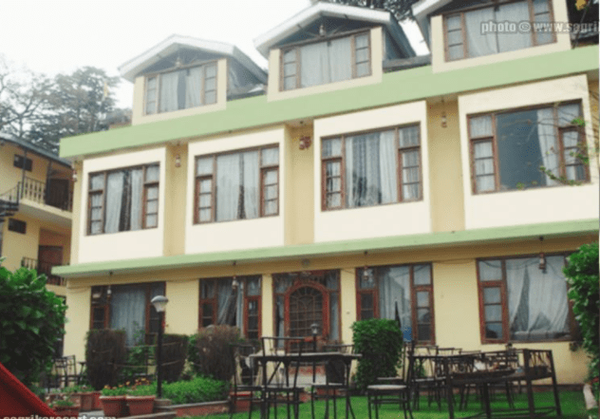Top 10 Treks in Uttarakhand – A Complete Guide
 Mountains Curve
14 Aug, 2025
24 mins read
62
Mountains Curve
14 Aug, 2025
24 mins read
62
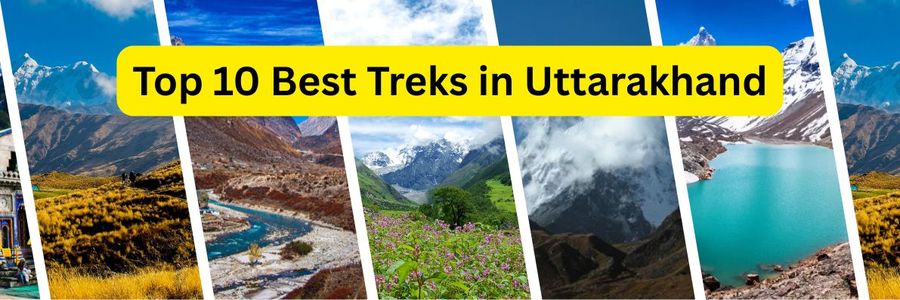
Uttarakhand, often called the Land of Gods, is also a paradise for trekking enthusiasts and mountain explorers. With its snow-capped Himalayan peaks, lush alpine meadows, sacred rivers, and charming villages, this Himalayan state offers trekking adventures for every kind of traveler — from a gentle nature walk to a challenging high-altitude expedition. The thrill lies in its diversity, where every trail reveals unique beauty, culture, and stories. The top 10 treks in Uttarakhand include Har ki Dun, Valley of Flowers, Dayara Bugyal, Gaumukh Tapovan, Kedarkantha, Rudranath, Tungnath, Auden Col, Kuari Pass, and Pindari Glacier — each offering breathtaking views, unforgettable experiences, and quick facts to help you plan your next journey.
Below is a list of top 10 treks in Uttarakhand with a detailed travel guide:
1. Har ki Dun Trek
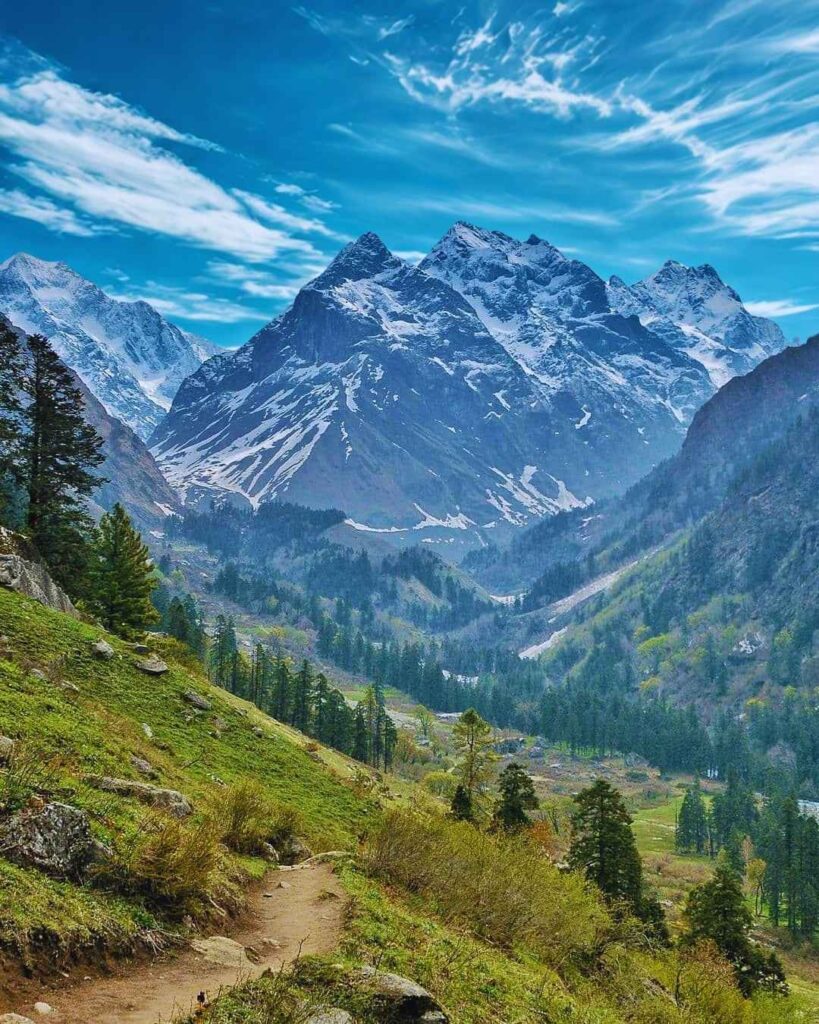
Har Ki Dun Trek, located in the Garhwal Himalayas of Uttarakhand, is one of the best treks in the state, offering a perfect blend of Himalayan culture and natural beauty. Situated within the Govind Wildlife Sanctuary & National Park, this cradle-shaped hanging valley sits at an altitude of around 3,566 m (11,700 ft) and is surrounded by snow-covered peaks, alpine vegetation, and lush green Bugyals (high-altitude meadows). The trek covers a total distance of about 34 km, starting from Sankri base camp, and can be completed within 4–5 days. Along the route, trekkers experience ancient Himalayan villages, pristine lakes, and breathtaking valleys—a rare combination on a single trail. Har Ki Dun is also connected to Baspa Valley via Borasu Pass, adding to its adventurous charm. A temple dedicated to Lord Shiva stands in the final village along the trek, reflecting the region’s cultural richness.
Quick Facts:
- Duration: 6–7 days
- Best Time: April–June & September–November
- Difficulty: Moderate
- Highest Altitude: ~12,500 feet at Marinda Lake
- Starting Point: Sankri
2. Valley of Flowers Trek
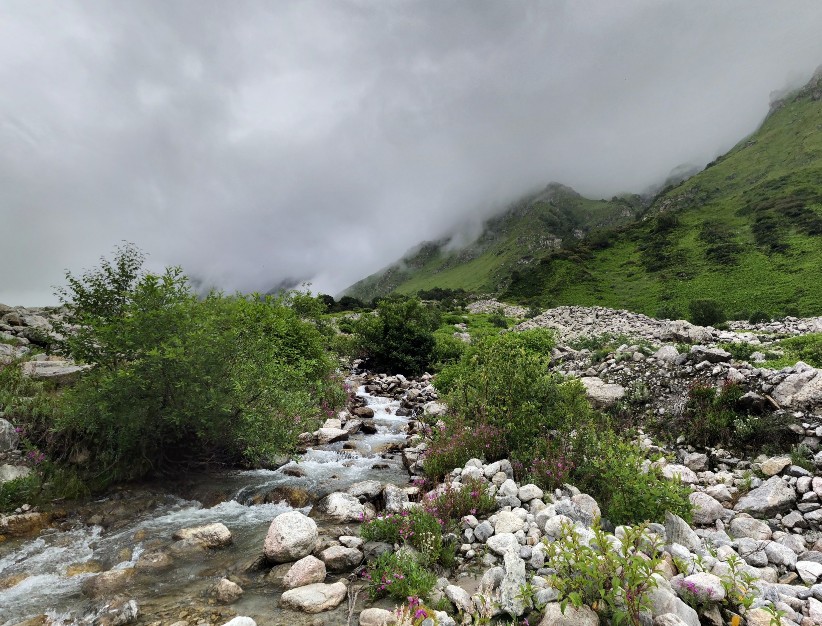
Hidden in the Garhwal Himalayas of Uttarakhand lies the Valley of Flowers, a vibrant paradise that comes alive during the monsoon. This enchanting stretch, recognized as a UNESCO World Heritage Site, is renowned for its alpine meadows, rare plant species, and spectacular scenery. The trek begins at Pulna or Govindghat, gradually leading you along wooden bridges, forested paths, and sparkling streams. Over the 38 km round journey, trekkers pass through Ghangaria—the common base for both the Valley and the sacred Hemkund Sahib.
Within the valley, a sweeping carpet of multicolored blossoms stretches to the horizon, with over 600 varieties of wildflowers swaying in the mountain breeze. Cascading waterfalls, the distant gleam of snow-capped peaks, and the hum of gushing streams create a sensory delight at every turn. The climb to Hemkund Sahib, one of the world’s highest Gurudwaras beside the serene Hemkund Lake, adds a spiritual dimension to this journey. Here, nature’s artistry meets cultural devotion, making it one of India’s most treasured trekking experiences.
Quick Facts:
- Best Time to Visit: July to September
- Total Trek Distance: ~38 km
- Accessibility: Starts from Pulna or Govindghat, Uttarakhand
- Major Highlight(s): UNESCO World Heritage Site with over 600 wildflower species and Hemkund Sahib Gurudwara
3. Dayara Bugyal Trek
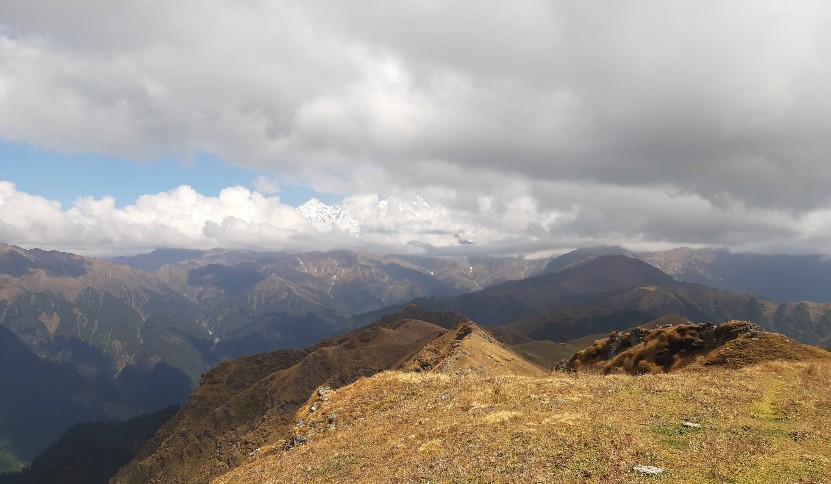
In the heart of the Garhwal Himalayas lies Dayara Bugyal, a sprawling alpine meadow that transforms with the seasons, making it one of Uttarkashi’s most sought-after trekking destinations. Resting at an altitude of over 10,000 feet, the trek offers an easy to moderate trail, ideal for both beginners and those seeking a scenic Himalayan escape.
From the very first steps at the base camp, trekkers are greeted by the towering silhouettes of Himalayan peaks like Bandarpunch, Kala Nag, Srikanth, and Chaukhamba. The trail leads through serene forests, picturesque campsites, and age-old mountain villages before opening into vast meadows that change character throughout the year. In summer, rhododendrons and alpine flowers blanket the slopes in vibrant colors, while winter covers them in a pristine sheet of snow, turning the entire meadow into a white wonderland.
The climb to Dayara Top rewards trekkers with panoramic views stretching to the Gangotri group of mountains, and a stop at Tingling Point offers a sweeping look at the surrounding ranges. Whether you come for the crisp winter air or the colorful summer bloom, Dayara Bugyal delivers unmatched variety and charm, offering a true Himalayan experience with minimal effort and unforgettable mountain vistas.
Quick Facts:
- Duration: 3 to 4 days
- Best Time: from December to April
- Difficulty: Easy–Moderate
- Highest Altitude: 3,780 meters (~12,400 feet)
- Starting Point: Raithal
4. Gaumukh Tapovan Trek
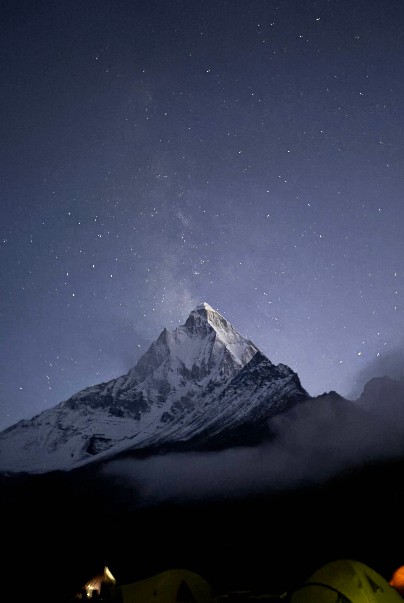
The Gaumukh Tapovan Trek is a timeless Himalayan journey that blends adventure, spirituality, and raw mountain beauty. Starting from the cultural hub of Rishikesh, the route unfolds through the Gangotri region, leading trekkers deep into the Garhwal Himalayas. Over roughly 46 km and 7 days, the trail takes you past rocky paths, alpine meadows, and glacial moraines before reaching the Gangotri Glacier — the origin of the holy River Ganga.
Tapovan, situated at an altitude of about 14150 ft, serves as the base camp for the striking Mt. Shivling. From here, the view of the peak, rising sharply into the sky, is nothing short of mesmerizing. The high-altitude meadows of Tapovan are home to Himalayan Bharals grazing against a backdrop of snow-clad summits, while the Bhagirathi River and Akash Ganga stream add music to the silence of the mountains.
This moderate to difficult trek rewards trekkers with panoramic views of the Bhagirathi Massif (I, II, III), Mt. Shivling, Meru Parvat, Sumeru Parvat, and Kedar Dome. Between its sacred significance, breathtaking landscapes, and the thrill of walking in the shadow of towering peaks, Gaumukh Tapovan remains one of India’s most legendary trekking experiences.
Quick Facts:
- Duration: 6 to 7 days
- Best Time: May - June and September - October
- Difficulty: Moderate
- Highest Altitude: ~14,150 feet
- Starting Point: Gangotri
5. Kedarkantha Trek
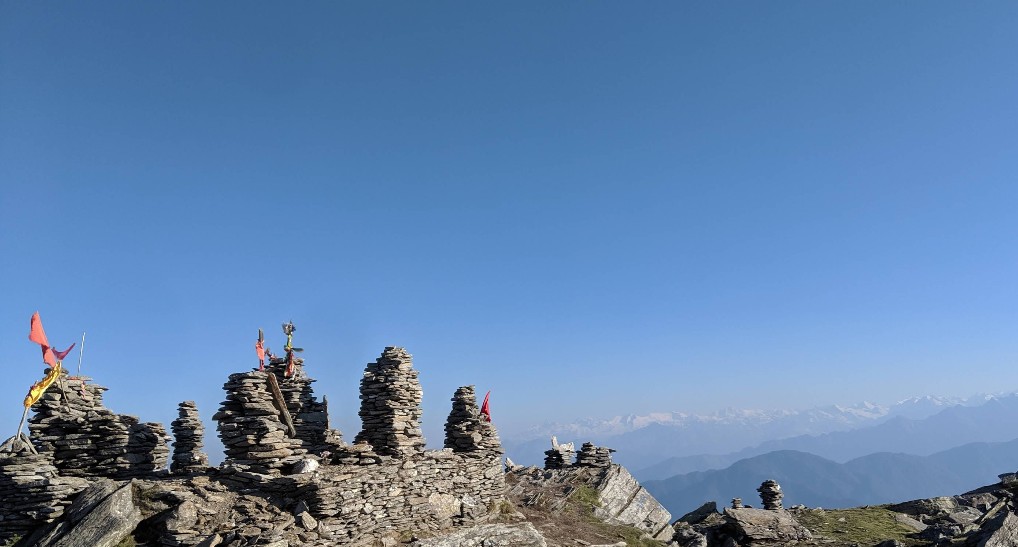
Kedarkantha Trek is a classic Himalayan adventure that combines accessible trails with a rewarding summit climb. Located in the Tons River Valley of Uttarakhand, this ridge peak stands tall at 12,500 feet, offering sweeping 360-degree views of surrounding Himalayan ranges. The journey begins in Sankri, a quaint village about 200 km from Dehradun, and unfolds over 3–4 days on a circular route that starts and ends at the same point.
The trail moves through thick oak, pine, and rhododendron forests, opening into scenic meadows and crossing sparkling water streams. A highlight along the route is the frozen Juda Ka Talab, a serene alpine lake that reflects the beauty of its snow-covered surroundings in winter. The gradual climb to the base camp prepares trekkers for the final steep push to the summit, where untouched snowy expanses stretch as far as the eye can see.
Suitable for both beginners and seasoned trekkers, Kedarkantha is most captivating from December to April, when fresh snowfall transforms the route into a pristine winter wonderland. With its mix of natural charm, steady ascents, and the thrill of a panoramic peak view, Kedarkantha delivers a fulfilling Himalayan trekking experience in every season.
Quick Facts:
- Duration: 4 to 5 days
- Best Time: December–April
- Difficulty: Easy–Moderate
- Highest Altitude: ~12,500 ft
- Starting Point: Sankri
6. Rudranath Trek
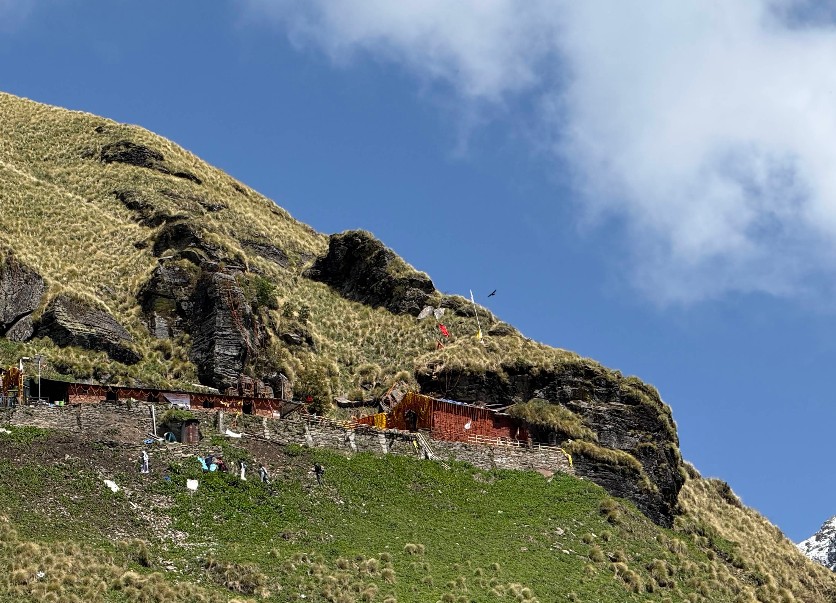
High in the Garhwal Himalayas, Rudranath Trek offers a rare blend of spirituality and wilderness, leading to one of the most remote temples of the Panch Kedar circuit. At an altitude of about 3,600 m (11,800 ft) in Chamoli district, this journey unfolds across dense forests, open bugyals, and peaceful Himalayan villages before revealing a stone shrine dedicated to Lord Shiva. The temple sits in a meadow framed by majestic views of Trishul, Nanda Devi, and Nanda Ghunti, creating a setting of unmatched serenity.
Considered the most challenging and longest of the Panch Kedar routes, Rudranath rewards its visitors with a tranquil environment far from crowded trails. The trek offers three main approaches — from Helang, Sagar Village, and Mandal Village — each with its own charm. Sagar provides a more approachable route for occasional trekkers, while the Mandal path involves crossing the Naoli Pass and navigating tougher terrain.
Whether chosen for its spiritual significance, the variety of landscapes, or the thrill of its distance, this trek immerses you in the raw grandeur of the Himalayas. Here, every step feels like a pilgrimage, every view a blessing, and the journey itself becomes a sacred connection to Neelkanth Mahadev’s abode.
Quick Facts:
- Best Time to Visit: June to September
- Accessibility: Trek routes start from Helang, Sagar Village, or Mandal Village in Chamoli district, Uttarakhand
- Major Highlight(s): Remote Panch Kedar temple with views of Trishul, Nanda Devi, and Nanda Ghunti peaks
7. Tungnath Trek
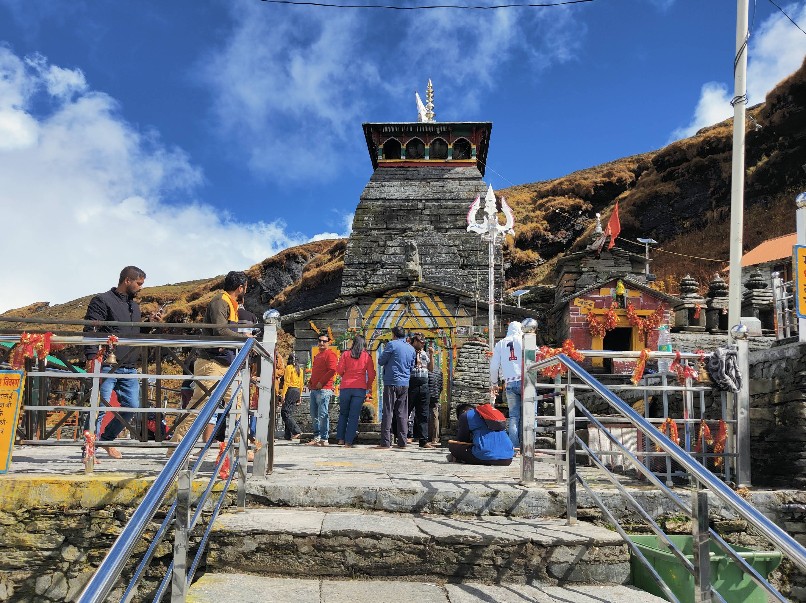
Tungnath Temple, nestled high in the Garhwal Himalayas at an altitude of about 3,680 m (12,073 ft), holds the distinction of being the highest Shiva temple in the world and a significant shrine in the Panch Kedar circuit. Resting just below Chandrashila Peak, it sits between the Mandakini and Alaknanda river valleys, surrounded by snow-clad Himalayan ranges and a calm alpine atmosphere.
The journey to this sacred site begins from Chopta, with a trek of roughly 3.5 km that can be covered in 3 to 4 hours. The route is steady and well-marked, making it suitable for beginners, seasoned trekkers, families with children, and even senior travelers. Along the way, a mix of forested trails and open stretches offers moments of stillness, punctuated by breathtaking glimpses of distant peaks.
Typically, the Tungnath Trek spans about 3 days from Rishikesh, including travel to Chopta and the ascent to the temple. The experience combines accessibility with high-altitude adventure, requiring only basic fitness while rewarding you with spiritual serenity and magnificent vistas. Rich in legends from the Mahabharata, Tungnath is more than a trek—it’s a journey into the heart of devotion, Himalayan heritage, and nature’s grandeur.
Quick Facts:
- Best Time to Visit: April to November
- Accessibility: 3.5 km trek from Chopta in Rudraprayag district, Uttarakhand
- Major Highlight(s): Highest Shiva temple in the world, part of Panch Kedar, with views of snow-capped Himalayan peaks
8. Auden Col Trek
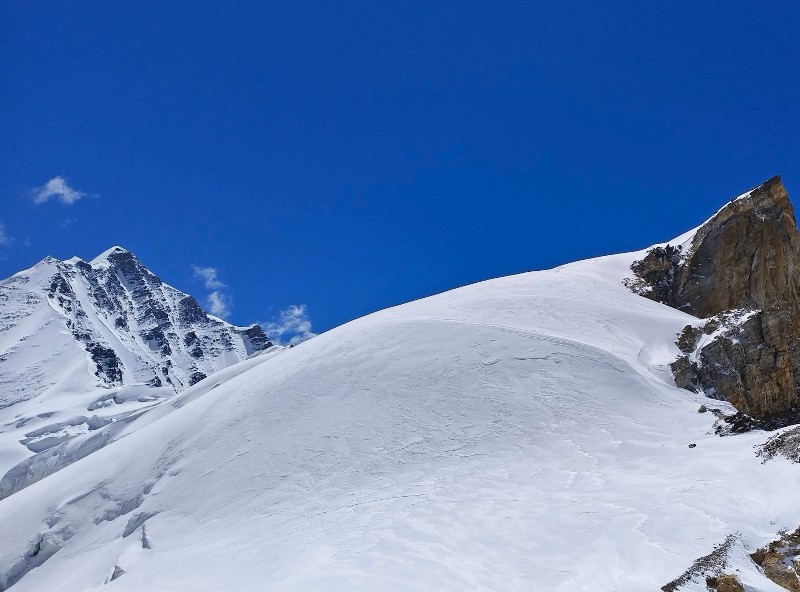
Hidden between remote ice corridors and towering ridgelines, a path rises through fractured glaciers and sweeping alpine emptiness. At elevations brushing the sky, deep crevasses carve the surface into intricate patterns, while frozen lakes shimmer silently in untouched basins. Starting from a town echoing with temple bells, the Auden's Col route winds past cascading streams, rough moraines, and camps perched beside shifting ice fields.
Every turn reveals shifting moods—serene valleys giving way to sheer climbs, and calm meadows leading suddenly to endless snow. Here, glacier floors stretch into the horizon, meeting ridges that split the mountains like a giant’s handprint. High above, peaks guard the passage, with summits veiled in drifting clouds. In the distance, a frozen mirror glints—waters of remote talas, each with its own legend whispered by the wind.
Days blend into a rhythm of steady steps and thin air, with nights lit by starlight over white expanses. The journey eventually spills into another sacred town Kedarnath, the path itself becoming both a challenge and a prayer. This is not a trail for casual wanderers—it is a raw crossing through the heart of the Garhwal, a union of danger, beauty, and the wild pulse of the Himalayas.
Quick Facts:
- Best Time to Visit: March to May & September to November
- Accessibility: Starts from spiritual town of Gangotri and ends in Kedarnath; accessible by road from Rishikesh, Haridwar, and Dehradun
- Major Highlight(s): Nala Campsite, Rudugaira Campsite, Auden Pass, Khatling Glacier, Mayali Pass, Masar Lake, Vasuki Tal, and Kedarnath Temple.
9. Kuari Pass Trek
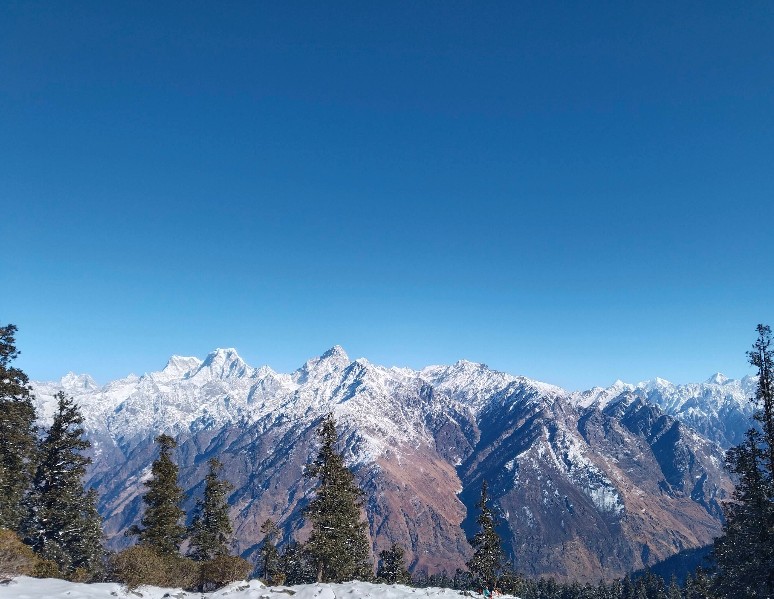
High above winding valleys, where forests seem to lean into the clouds, the Kuari Pass Trek quietly weaves its way through oak canopies, wind-brushed ridges, and sweeping meadows that feel like nature’s own grand amphitheater. From the very first steps, scattered peaks rise like guardians of the Garhwal Himalayas, with occasional glimpses of the elusive Mt. Nanda Devi shimmering in the distance.
This trail, looping from Dhak and back again over roughly 33 km, balances between challenge and welcome — a place where both the curious beginner and the seasoned wanderer can find their own pace. At its crest, 12,500 ft above sea level, the pass opens into views so wide they feel infinite. Seasons write their own stories here: winter’s snow paints the landscape into a quiet white wonderland, while other months bring shifting tapestries of color — golden grasses, deep green forests, and bursts of wildflowers.
Along the way, ridge climbs and forest walks flow seamlessly into one another, offering that rare combination of thrill and serenity. Kuari Pass is less a single destination and more a moving panorama, one that reveals new perspectives with every turn. It is a journey that, once taken, settles into memory like a treasured photograph.
Quick Facts:
- Best Time to Visit: December to February for snow, March to May for pleasant weather
- Accessibility: Connected by road from Joshimath; famous for its ropeway (Asia’s longest after Gulmarg)
- Major Highlight(s): Premier skiing destination, views of Nanda Devi & other Himalayan peaks, home to the highest artificial lake in the world
10. Pindari Glacier Trek
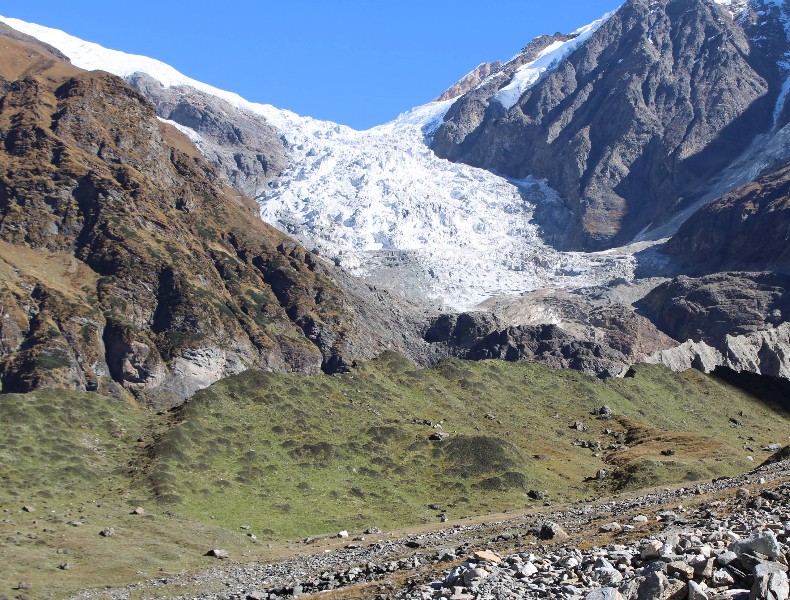
Located in the Kumaon region of Uttarakhand, the Pindari Glacier Trek is a scenic and culturally rich adventure. The trail begins in the picturesque village of Khati and follows the course of the Pindar River, offering constant views of snow-covered peaks and lush valleys. Trekkers pass through charming hamlets, terraced fields, and vibrant rhododendron forests that burst into bloom during spring.
The trek leads to the snout of the massive Pindari Glacier, sitting at an altitude of around 3,660 metres, where the river emerges from the icy mass. The route is moderate in difficulty, making it suitable for beginners and experienced trekkers alike. Along the way, travellers can immerse themselves in the warm hospitality of the Kumaoni people, gaining a glimpse of their unique culture and traditions.
Unlike the more crowded Garhwal trekking routes, the Pindari Glacier trail remains peaceful and less commercialised. This makes it an excellent choice for those seeking solitude and natural beauty without the bustle of heavy tourist traffic. With its mix of breathtaking landscapes, rich biodiversity, and cultural encounters, the Pindari Glacier Trek is a rewarding experience for anyone eager to explore the lesser-known gems of the Himalayas.
Quick Facts:
- Best Time: May–October (Avoid monsoon)
- Difficulty: Easy–Moderate
- Starting Point: Khati Village
FAQs
Q 1. Which is the best time for trekking in Uttarakhand?
Ans. Summer (April–June) and post-monsoon (September–November) are best for most treks, while December–March is great for winter treks.
Q 2. Do I need a permit for trekking in Uttarakhand?
Ans. Yes, some treks require forest department permits or special passes.
Q 3. Which trek is best for beginners in Uttarakhand?
Ans. Dayara Bugyal, Kedarkantha, and Tungnath–Chandrashila are ideal.
Q 4. Are guides mandatory for trekking?
Ans. Not always, but highly recommended for safety.
Q 5. Is camping allowed on all treks?
Ans. Most allow camping, but some have designated sites only.
Q 6. How difficult is the Gaumukh Tapovan Trek?
Ans. It’s moderate to difficult due to high altitude.
Q 7. Which trek offers the best snow views?
Ans. Kedarkantha, Kuari Pass, and Dayara Bugyal in winter.
Q 8. Are there monsoon treks in Uttarakhand?
Ans. Yes, the Valley of Flowers is the most famous.
Q 9. What should I pack for a Himalayan trek?
Ans. Warm layers, trekking shoes, water bottles, and medicines.
Q 10. Is mobile network available on treks?
Ans. Only in lower villages; high-altitude stretches have no signal.
Q 11. Can children go trekking?
Ans. Yes, for short treks like Tungnath and Dayara Bugyal.
Q 12. How to prepare physically for trekking?
Ans. Walk, jog, climb stairs, and do light strength training.
Q 13. Which trek has the best mountain views?
Ans. Kuari Pass, Har ki Dun, and Gaumukh Tapovan.
Q 14. Are there tea houses or homestays on treks?
Ans. Many have village homestays; others require camping.
Q 15. Is trekking in Uttarakhand safe?
Ans. Yes, with proper planning and local guidance.
Conclusion
From the flower-strewn meadows of Valley of Flowers to the icebound challenges of Auden Col, Uttarakhand offers treks for every type of adventurer. Whether your heart seeks spiritual peace, panoramic Himalayan views, or the pure thrill of wilderness, these top 10 treks in Uttarakhand promise experiences you’ll treasure for life. Lace up your boots, answer the mountains’ call, and start your journey into the heart of the Himalayas.
Written By:
Mountains Curve



Hotels at your convenience
Now choose your stay according to your preference. From finding a place for your dream destination or a mere weekend getaway to business accommodations or brief stay, we have got you covered. Explore hotels as per your mood.

